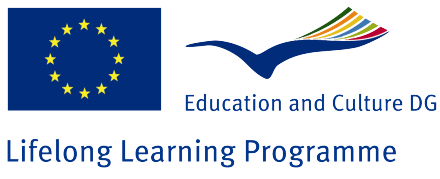Level 3»4: From exploratory to focused reading
| Transition 4.1 | From unsystematic to specific reader responses | |
|---|---|---|
| Focus | Stimulating and modelling rhetorical examinations of texts | |
| Goals | Teacher activities | Student activities |
| Compare the conclusions the texts offer on psychological and social issues with the student’s own perspective. | Ask the students to give their opinions on the topics covered in the texts. Ask the students to identify the conclusions the texts offer on psychological and social issues, Help students compare the different viewpoints in the texts. |
Develop and present one’s own viewpoint. Identify the conclusions texts reach about psychological and social issues. Point out similarities and differences between the different viewpoints. Reformulate personal perspective, based on what has been read. |
| Compare different texts from fiction and non-fiction that deal with the same topic. | Present different texts on the same topic. | Point out similarities and differences between the texts and the way they present and deal with topics. |
| React to a new topic. | Talk about reactions to new topics. | Discuss initial reactions to new and thus unfamiliar topics. Review opinions after interpreting the text. |
| Take into account one’s aim in reading the text and choose suitable strategies to achieve this. | Propose challenging tasks relating to the more complex parts of a text. | Adopt a reading strategy suitable for achieving own aim in reading the text. |
| Open up to a variety of text topics. | Present book lists on topics that are – at first sight at least – unfamiliar and difficult to access for the students. | Choose books on topics that are unfamiliar and difficult to access. |
| Present a valid argument on literature. Give an evaluation. | Help students formulate arguments about aspects such as quality, difficulty, importance presentation of topics and issues and to prove these arguments with examples. Help students present a personal interpretation that may include reference to taste. Provide criteria for presenting a valid argument and evaluation. Present reviews and other examples of rhetorical writing. |
Practise formulating arguments that support own interpretation and apply different criteria (quality v. personal taste). Discuss arguments with others. Consider different opinions and possibly reformulate one’s own opinion. Present oral or written reviews and other rhetorical genres referring to the text and other opinions on it. |
| Transition 4.2 | From implicit knowledge to awareness of literary structure | |
| Focus | Developing awareness of literary structures | |
| Goals | Teacher activities | Student activities |
| Broaden knowledge of narrative techniques and understand their different effects. | Provide texts that use different narrative techniques, and help the students systematize the narrative sequences (such as descriptive passages, monologues, different rates of action, storylines, perspectives, styles). | Compare different texts with regard to narrative techniques. |
| Broaden knowledge of narrative techniques and understand their different effects. | Provide texts with various narrative sequences that differ in terms of action and speed, and raise questions about their effects and function. | Discuss the role of different rates of action and provide examples from the text (acceleration or deceleration of the action, etc.). |
| Evaluate the effects of narrative techniques. | Provide texts or other media in which narrative techniques are used to achieve different effects. Give students the task of identifying and comparing similarities and differences. |
Compare texts or other media that use similar or different narrative techniques. |
| Choose texts according to different narrative characteristics. | Provide reviews of texts with different narrative characteristics so that students can choose which text to read. | Present preferences and difficulties with regard to narrative techniques, and provide examples from the text. |
| Transform texts creatively. | Get students to change different aspects of characters or the narrative perspective and to point out the effects on the text. | Propose alternative narrative perspectives with regard to the role and behaviour of characters and try to figure out how this would change the development of the story. |
| Transition 4.3 | From an unconsidered to a criteria-based choice | |
| Focus | Valuing literary texts | |
| Goals | Teacher activities | Student activities |
| Identify characteristics of texts that have different levels of complexity. | Explain different characteristics, providing the terminology used and examples to help students detect patterns in the text (cliché, stereotype, originality, authenticity). | Find patterns in popular, commercial texts. |
| Find differences between texts of different complexity. | Provide examples of different levels of complexity (storylines, vocabulary, characterization) for students to compare. | Present a comparison of texts of different levels of complexity, considering the criteria discussed such as storylines, vocabulary, characterization, etc. |
| Understand and explain preferences for texts of different levels of complexity. | Create opportunities for students to defend and criticize evaluative response to texts. | Present arguments for the evaluative response to texts (reviews, disputations, advertisements…). |
| Use quality-based criteria to choose texts. | Help students select texts using different criteria (e.g. canonical lists, lists of the most popular texts, etc.). | Research texts to make canonical lists or anthologies and justify this selection. |
| Understand the concept of the literary field and aspects of it. | Discuss sources on literary prizes (press articles, interviews, and speeches) in order to understand publishing choices. | Analyse criteria employed to reward literary works. Analyse top book charts from different sources and discuss conclusions. |



